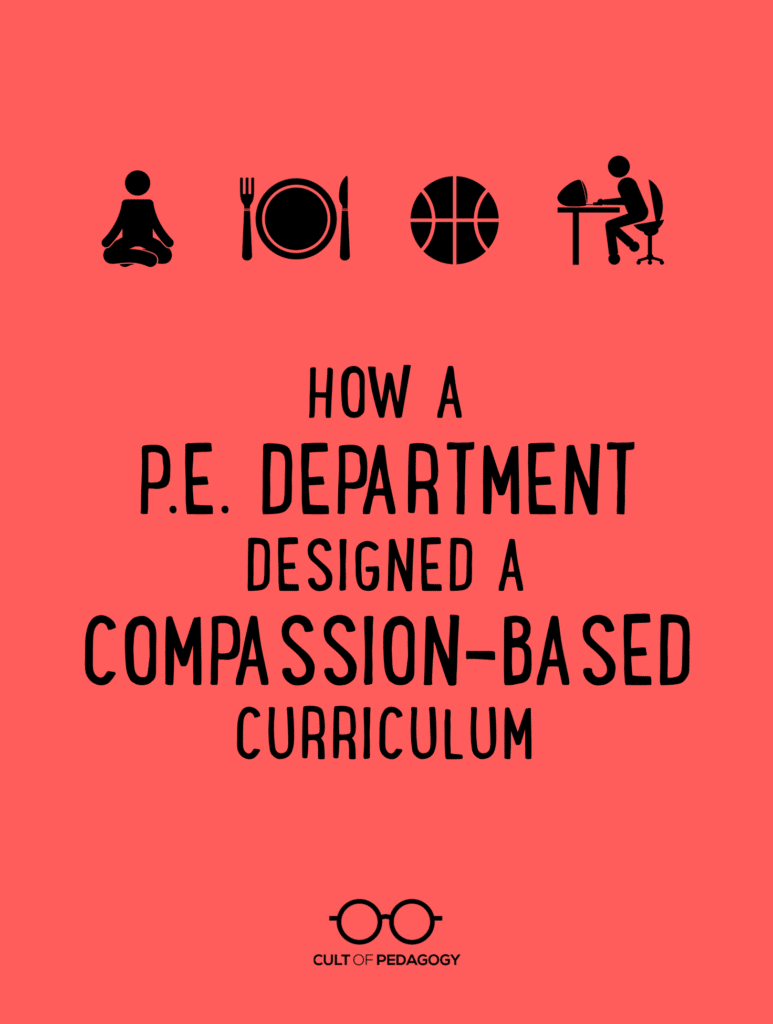
Five years ago, the physical education department in Wellsville Secondary School, in Wellsville, New York, confronted a problem that plagues many middle and high school PE departments: Their students were showing up unprepared to participate in class, and they knew that if this problem went unchecked, it could prevent many kids from earning a diploma. Worse, many students would leave high school having missed out on the opportunity to learn important things about caring for their health.
In my work with this school, we discovered that some districts were attacking the problem by increasing the number of make-up classes offered after school. Others went even further: They took a closer look at the amount of choice provided to students in their pursuit of physical education credit. They considered the unintended consequences of traditional schedules and curricula, and they began thoughtfully redefining what it meant to be a successful physical education student. Expanding the definition allowed them to broaden the criteria for success as well.
Physical education teacher Bill Sortore, a senior member of the department, and his colleagues explored these and other options in their efforts to better engage students. In the end, they chose to do something completely unexpected: They took a step back in order to assess and reflect, rather than leaping forward. As the facilitator of this initiative, I remember this moment well.
“We want to try to figure out why they won’t participate in class to begin with, rather than making assumptions,” Bill explained during our first meeting together, and the other teachers in his department agreed. “And we need to take a step back and really think about what matters when it comes to teaching kids about their health and wellness.”
We began by observing students, interviewing them, and immersing ourselves in their worlds. Essentially, we tried to empathize with them, in order to learn more about their interests and needs, in order to create solutions that attended to the root of the participation issue, rather than making assumptions. This is a perfect example of design thinking in the wild: practicing empathy, conceptualizing potential solutions, testing them, and using what is learned from implementation to improve—or iterate—on original ideas.
By the end of our initial meeting, this department was committed to getting to know their students like they never had before, and what they discovered changed everything.
It changed me, too.
Putting Culture Ahead of Curriculum
The information gleaned from our interview process was revealing. Some kids, for a variety of reasons, didn’t want to change for class. Others were intimidated by the exceptionally athletic kids in their school and worried about competing against them. Some didn’t understand why PE mattered so much. Others didn’t enjoy specific class activities, themes, or sports, and they were resentful that they were required to play anyway.
One particular reality hit all of us very hard, though: We realized that some kids didn’t have washers or dryers at home. Others were living in multiple locations and bouncing between them all week long. Some were working almost full time after school to help out with family expenses. Quite a few couldn’t afford a separate set of clothes for PE.
Those who were failing to participate weren’t lazy or disorganized. They were stressed, and in so many ways, doing their best.
Addressing the Literacy Component
Meanwhile, the Common Core State Standards were just beginning to settle into New York State schools and classrooms. Teachers were grappling with the instructional shifts that underpin the Core. Many struggled to define how literacy could support learning outside of English, math, science, and social studies as well.
PE teachers, in particular, needed the most support.
Again, we started with questions.

“How do people rely on their literacy skills to become healthier?” Bill and his colleagues wondered, and when he framed the work to be done in this way, ideas began to emerge. For instance, they knew that many grown adults were guilty of hitting up Google every time a health concern troubled them. Many used their reading and writing skills to set and monitor nutrition and fitness goals. Savvy readers knew that some of the things they read online were accurate and helpful, while others were misleading. Some were unnecessarily frightening, too. The department realized that these skills needed to be taught.
“What if our students learned about the best ways to do this kind of research?” Bill’s colleague Marc Agnello, who is now the current department chair, pondered aloud. “What if they assessed their health, then set their own goals to improve it?”
I wondered, “What if they continued researching along the way, in order to meet those goals, too?”
What if? How might we? What more do we need to know? These questions guided our thinking as we worked to build more literacy work into the physical education curriculum and understand the participation issues that were plaguing not just Wellsville, but many New York State schools. We had our work cut out for us.
Crafting a Vision
“What is your vision of the graduate that you hope to play a role in producing?” I asked the teachers at a follow-up meeting.
Their answers were not what I expected. They spoke about the need to help their students achieve better balance between mind, body, and spirit as they grappled with the challenges their lives presented them. They wanted to empower their students to assess and monitor and improve their own health, long after they graduated from school. Most importantly, they wanted them to appreciate the fact that PE was about so much more than sports or athletic performance. It was bigger than that.
And these teachers? They were bigger than that, too. They weren’t interested in imposing rigid definitions of success on their students. Instead, they wanted to help them learn how to advocate for themselves so that their teachers could be responsive to their interests and needs.
This vision became the anchor for Wellsville’s new standards and outcomes in grades 6-12, which changed how students participated in physical education classes. It helped these teachers come to know each one of their students differently.
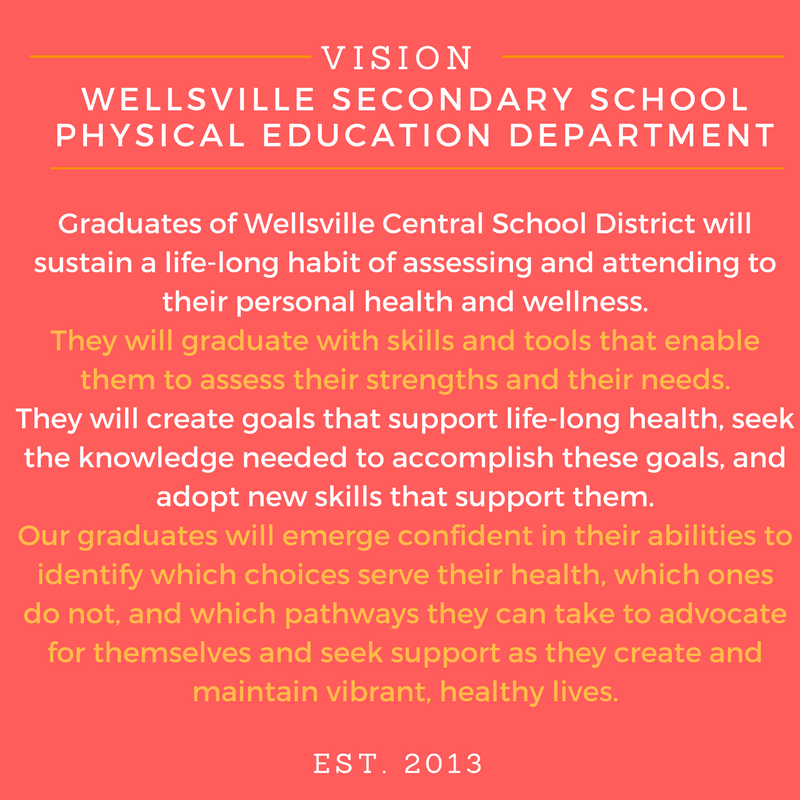
Planning the Work
Once the department clarified this mammoth vision, we spent the remainder of our professional learning time that first year defining aligned grade-level outcomes. Our work together sounded something like this:
“If graduates are going to ‘sustain a lifelong habit of assessing and attending to personal health and wellness,’ what will they need to know and be able to do by the end of grade twelve? Eleven? Ten? Nine? Eight? Seven? Six?” Our answers had to be explicit. What was produced had to be observable, too.
What if? How might we? What more do we need to know? Curriculum design opened new investigations, and this led to the development of a detailed plan that created a much tighter connection between the PE and Health departments. The gym and field were for physical activity and building the skills—many of them critical thinking and visual literacy skills—that enabled team play. Health teachers began providing different reading, writing, and inquiry opportunities that involved a bit more print while supporting the physical education curriculum.
Together, we examined each element of their bold vision statement and aligned the outcomes for each grade level to it with careful intentions, creating a coherent and powerful trajectory for learners to travel as they moved through their middle and high school health and physical education classes.
Then the real work began.
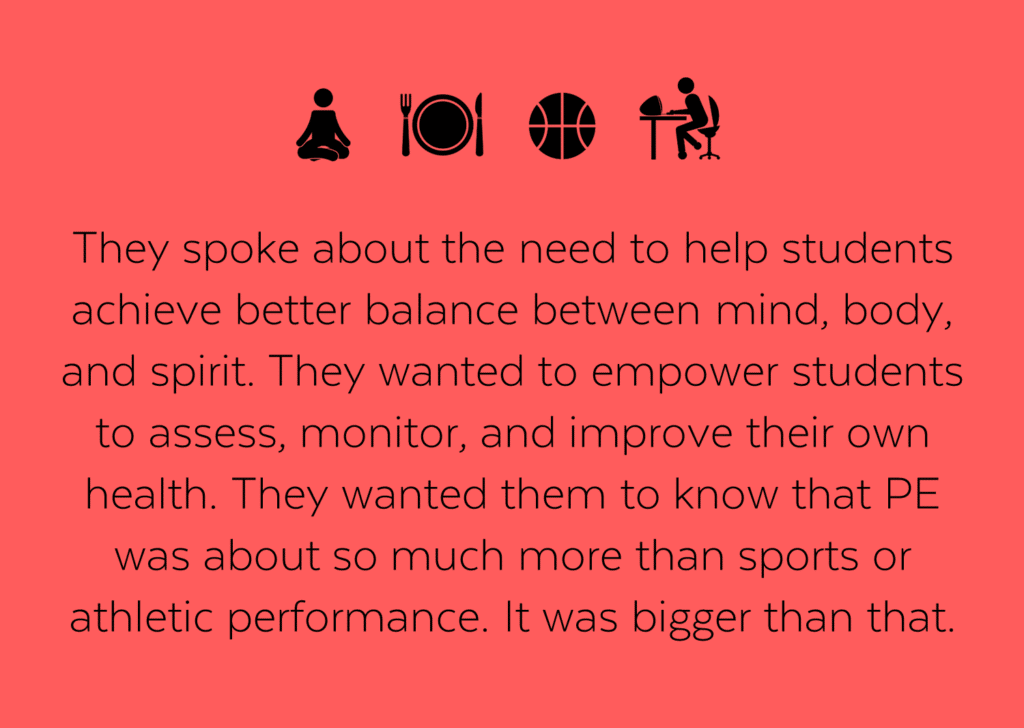
Working the Plan
Achieving a bold vision isn’t the work of a single lesson or unit or year. Often, it’s the work of an entire career. The road is never smooth, and there are many detours along the way. It’s not uncommon for curriculum plans to fail. Transitioning from print to practice is tough stuff. It takes a long time for vision to become reality.
I’m impressed by what’s been sustained in Wellsville. More important, I’m inspired by how their vision is growing.
“We’re still working our plan,” Bill told me when I called to check in a few months ago. I haven’t visited Wellsville in five years, and since then, they’ve experienced a great deal of change. The department has evolved, the structure of their school has changed, and administrators have shifted roles and positions.
“Our spirit remains the same, though,” Bill assured me, as he began bringing me up to speed on all that he and his colleagues are currently committed to. For instance:
- Teachers have begun quietly and respectfully assisting students who need better access to clean and comfortable clothing for class.
- They aren’t reacting when kids can’t change for class, and in fact, they’re being more thoughtful about which activities truly require a change of clothes and dropping this expectation entirely when they can.
- They’ve sustained their work with the health department, so that kids don’t have to miss play time in PE to read and write in ways that boost their health. Learners are researching and writing about pertinent issues in health class and using what’s discovered from the process to self-assess, reflect, and set clear goals. They’re also learning how to create action plans. “I’m taking this approach into the weight room too,” Bill told me. “We’re setting monthly goals and monitoring our progress.”
- Bill has begun conferring with his students one on one and in small groups. “Spending some time talking with each student helps them clarify their goals. It helps me get to know them better, too. We develop action plans together, and I’m checking in to help them problem-solve and stay motivated.”
- Finally, students are about to begin keeping records of their activities, their results, and their reflections on their growth and experiences.
My exchanges with Bill over the last several months have left me with a profound sense of gratitude. What strikes me isn’t what has been accomplished, but why. These teachers realize the importance of seeing the kids in front of them rather than sorting them. They talk with their kids. They respect the places they come from. They recognize the strengths that their students are cultivating by scaling the barriers they face, and they realize that it’s their responsibility to help their students get a bit of traction, build up speed, and catch enough wind to scale some pretty tall walls, rather than adding one more layer of bricks.
It’s not all about overcoming adversity in Wellsville, either. This department is very sensitive to the privileges their community enjoys as well.
Paying it Forward
Wellsville students have great access to a wide range of diverse athletic equipment. They’re appreciative of this, and they make great use of everything on hand.
“What if we could find a way to share it with other schools?” Bill asked me toward the end of our last phone call. “What if other kids in our region could have the same access to these resources that our students do?”

What if? How might we? What more do we need to know? These questions are guiding Bill’s thinking as he works to understand the challenges and opportunities inherent in this kind of sharing. He has his work cut out for him.
“But I’ve already made some calls,” he told me. “I think we can make this happen if there is interest from other schools and our regional leaders can give us a bit of support. Who knows? Maybe this is how I will spend my retirement.”
I have no doubt that retirement will only deepen Bill’s commitment to his community and kids. I have no doubt that this entire department will continue to lead with vision, too.
What if? How might we? What more do we need to know? These are the questions that put the Wellsville Secondary School PE department on a path toward more student-centered practices five years ago. They’re the questions they still ask themselves now.
I’m grateful to Bill Sortore and the Wellsville Physical Education Department for working with me so graciously and courageously five years ago and for being willing to check in with me this year, in order to bring me up to speed. Although I haven’t visited there in some time, our conversation reminded me of the greatest lesson I learned while facilitating this work: Having vision isn’t just about the statement, it’s about our willingness to see. ♦
If you’re interested in learning more about designing compassionate-based learning experiences for your students, you may want to check out Hacking School Culture: Designing Compassionate Classrooms. You can also connect with Angela or Ellen on Twitter at @AngelaStockman and @EllenFeigGray.
Join the Cult of Pedagogy mailing list and get weekly tips, tools, and inspiration that will make your teaching more effective and fun. You’ll get access to our members-only library of free downloads, including 20 Ways to Cut Your Grading Time in Half, the e-booklet that has helped thousands of teachers save time on grading. Over 50,000 teachers have already joined—come on in!

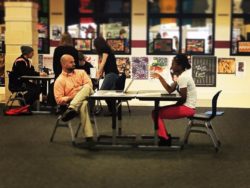

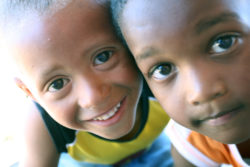
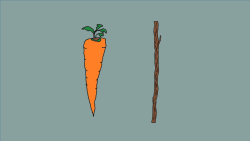
As someone whose personal experience with physical education classes was not an empowering one, I am very pleased to see the learning journey of this school.
A fluid and nuanced approach to physical education that is designed to teach students how to self-assess and create goals around their life-long health is exactly the approach that I am wanting to see in our schools.
It wasn’t my experience. Physical Education classes for me were a place of shaming, where my lack of fitness and lack of skill made me feel like I stood out in glaring neon. I learned to hate exercise in those classes. I learned to hate my body.
A wonderful book on this subject is “Spark: The Revolutionary New Science of Exercise and the Brain.” It shows schools that have taken similar learning journeys to Wellsville.
It’s interesting that this was the post for today, as I just happened to see a segment about a young man from a high school in Iowa who has created a dance curriculum for special needs students, Dancing Away the Stigma. Inspiring young man! Check out http://www.datsdance.com.
This is very nice. Empowering students on what goals do they want to achieve.
But will this be achievable for a big class? like a class of 30-40 students? and being a solo teacher without an assistant?
Hey Angela, nice post! Physical Education is an essential subject which plays an important role in the development of students. One must follow this subject for mental strength.